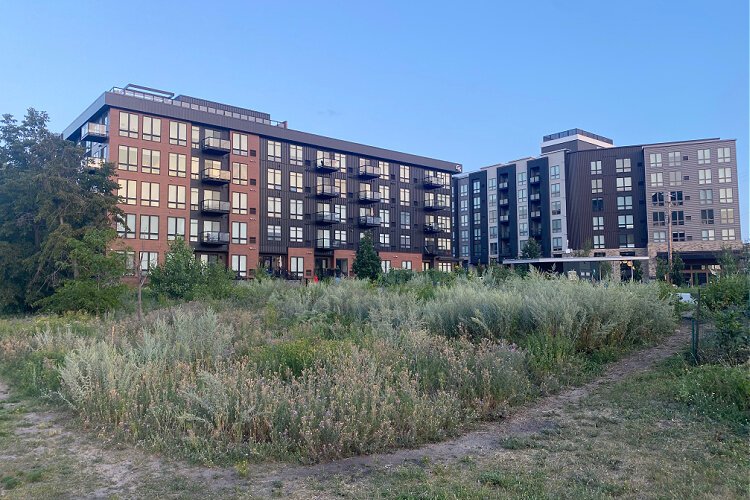Predicting the impact of Cincinnati’s new Connected Communities zoning policy
Minneapolis’ 2040 Plan results since its passage in 2019 lay out potential outcomes.

After months of presentations, listening sessions, meetings, and hours of impassioned public comments, the City Council approved Connected Communities proposal by a 6-3 vote. Connected Communities’ passage will greenlight the development of two-, three- and four-family housing within a quarter mile of central business districts (CBDs) and a half-mile within the new bus rapid transit corridors. It also removes minimum allocations for parking spaces for new developments within CBDs, with the rationale of diminishing vehicular traffic.
Cincinnati has not been unique in encountering the problem of access to housing that’s affordable for a wider population swath. Urban cores hemorrhaging population to suburban areas during the latter half of the 20th century was a nearly universal nationwide occurrence. Thus, Cincinnati city leaders attempting to combat the problem of affordable housing wasn’t unique.
In Minneapolis, its City Council passed the 2040 Plan, a comprehensive economic-growth template, in 2019. The document featured zoning modifications to facilitate higher density, more affordable housing, and the points of contention litigated before passage were remarkably similar to arguments made around Connected Communities.
The pro and con arguments surrounding the proposal have been intensely debated and, upon Connected Communities passage, now exist in the rear-view mirror. What’s unknown is whether it will have the purported impact on sustainability and affordable housing. However, outcomes from Minneapolis’ proposal provide proof of concept for how Connected Communities could catalyze citywide social and economic advancement.
A Data Dive
According to the Bipartisan Policy Center, a Washington, D.C.-based think tank, Minneapolis’ housing crunch accelerated in the mid-2010s, when the city added 37,000 residents, while only 12,000 housing units were added. Concurrently, the city lost 15,000 affordable homes, which the Center defined as homes accessible to those with 50% of area median income, and the median home price skyrocketed from $200,000 in 2014 to over $320,000 in 2021.
By comparison, Cincinnati’s home prices haven’t reached that strata (Redfin reports that, as of April 2024, the median home price in Hamilton County is $260,000, a 4% hike over the previous year), but the increase impacted affordability for many.
In 2019, the Council enacted its 2040 Plan, which took the drastic step of eliminating single-family-zoned housing (a more aggressive measure than Cincinnati has taken) and jettisoning off-street parking requirements on all new citywide developments.
After the plan was enacted in 2020, the Bipartisan Policy Center states over the first three years, an average of 57 building permits were issued for “missing middle” two- to four-unit housing, a 45% increase over the 2017-2018 average.
In June 2022, Smart Growth Minnesota, an assemblage of the strange bedfellows of fiscal conservatives and environmentalists, filed a lawsuit to thwart the plan, and District Judge Joseph Klein granted an injunction that suspended the 2040 Plan. The Minnesota Supreme Court upheld the injunction, but last month, the Court of Appeals Judge Keala Ede reversed the original decision, shifting the burden of proof to show the injunction’s necessity from the city to Smart Growth.
It will take time to revive multi-family developments, so it will take time to gauge the 2040 Plan’s impact on Minneapolis.
It’s natural to wonder whether those opposed to Connected Communities – and they come from a diverse range of Cincinnati neighborhoods – might take a similar tack.
Sound familiar?
Bill Lindeke holds a Ph.D. in urban studies geography, a geography professor at the University of Minnesota, a city development and infrastructure blogger, and a former St. Paul planning commissioner. His recent column from MinnPost.com summarized the conundrum urban areas face. He notes that the pre-COVID Minneapolis population of daytime office workers has declined by “roughly 75%.” The theoretical solution? More residents, more housing.

He said, “The city council effectively created the narrative and put housing on the forefront of local conversation. Relaxed regulations along transit routes allowed construction of six-story buildings without variances. It’s definitely an ambitious plan.”
When told about arguments in opposition to Connected Communities—lack of transparency and not addressing neighborhoods’ specific needs— he said the same claims had been made around the 2040 Plan. In retrospect, he believes the promised benefits and vehement opposition were both overcooked.
“The 2040 Plan made a difference even in that short window (before the injunction) of getting more housing built and cooling down rental prices, but I don’t think it’s made much of a difference in reducing inequality across the city.” Lindeke said. “I don’t think anyone will look back and say heavily emphasizing single-family housing and parking requirements were good ideas. Sustainability and affordability are important priorities, but developers are still typically incorporating parking into new buildings. Market needs will still significantly influence development.”
According to the Pew Charitable Trusts, Minneapolis rents only grew 1% from 2017 to 2022, whereas the rest of the state’s rose 14%.
Lindeke said that the City Council approved the 2040 Plan by a 12-1 vote. He’s skeptical that it would pass today given the current Council makeup.
“Back then, the Council spoke with a more unified voice,” Lindeke said. “Since then, hot-button issues like COVID and George Floyd’s murder have led to a quite different Council today. They’re all Democrats, but the division between pro-business centrists and progressives farther to the left has created lot of contentiousness. I don’t think the Plan has had the impacted many predicted, but the arguments around it during debate would have probably been paralyzingly divisive with the current Council.”
To paraphrase a financial services advertisement’s disclaimer, Cincinnati’s results may vary. Who can say whether the opposition expressed to Connected Communities during public comments could translate to several Council members’ ousters? X factors such as pandemics and deaths leading to accusations against law enforcement are even more impossible to predict.
One unsurprising occurrence was the announcement released approximately an hour before the City Council meeting to vote on Connected Communities began that a group entitled Coalition for a Better Cincinnati had retained Finney Law Firm to pursue avenues to block the implementation of Connected Communities.
According to the organization’s press release, “The city has not demonstrated that the Connected Communities legislation will accomplish this goal and has not provided any metrics for community impacts once it goes into effect. Neighbors across Cincinnati oppose Connected Communities because it ignores the many concerns we have for existing problems which will only be exacerbated by its passage. These concerns are already being experienced by residents, business owners, and neighborhoods across the city. Any change to our zoning code should benefit our community, not harm it.”
The Coalition gathered signatures from more than 500 Cincinnatians from 51 city neighborhoods.














